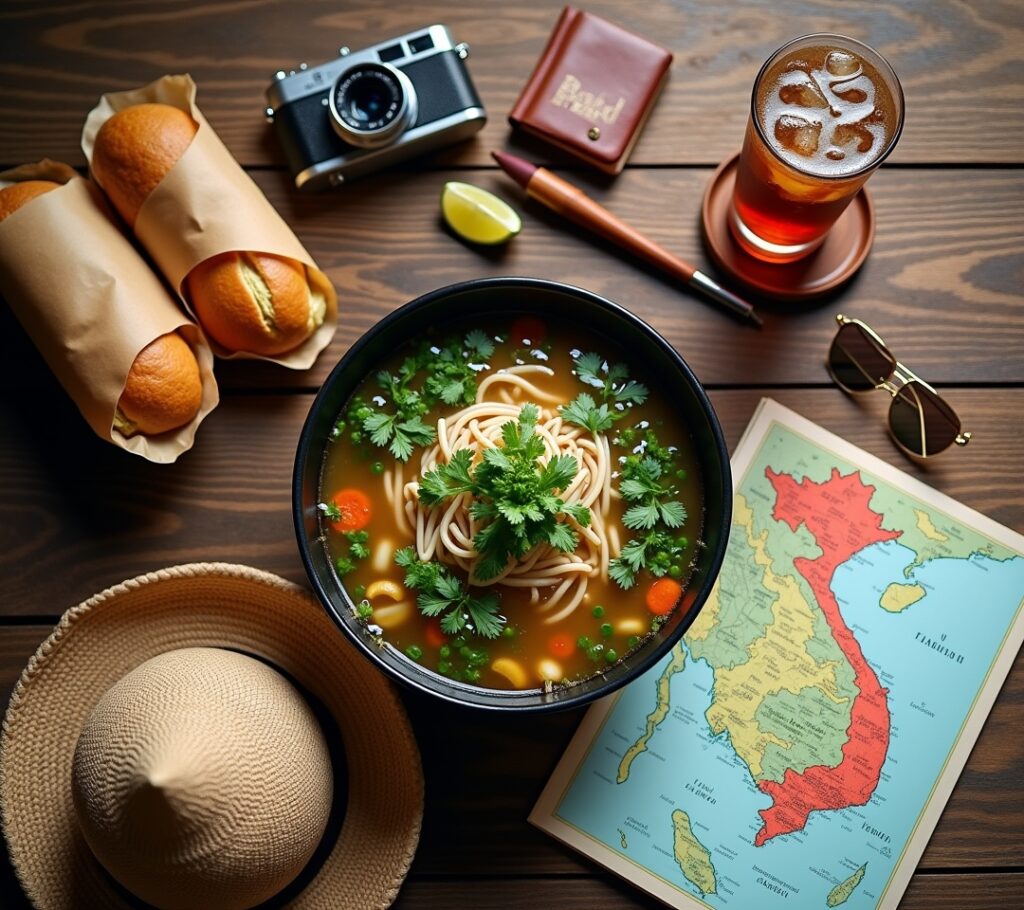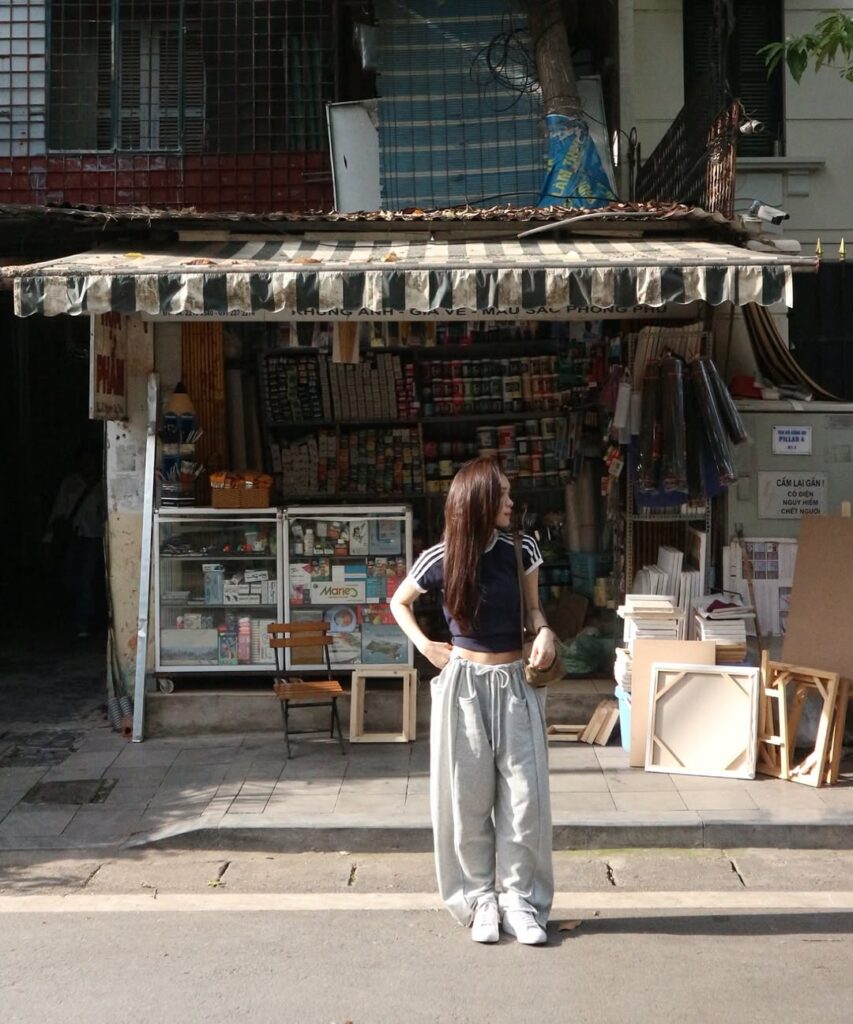Advertisements
Did you know that Vietnam serves over 3 million bowls of pho daily across the country? That’s just one dish in a culinary landscape so rich and diverse that I honestly thought I was prepared for it on my first trip there. Boy, was I wrong!
Planning a food journey through Vietnam isn’t just about knowing what to eat – it’s about understanding the essential tools, knowledge, and preparations that’ll make your culinary adventure unforgettable. Trust me, after three trips to Vietnam and countless food-related mishaps, I’ve learned that the right preparation can mean the difference between an amazing food experience and spending your vacation in a hotel room with stomach issues.
Essential Food Safety Items You Can’t Leave Home Without

Let me start with the boring but crucial stuff – food safety. On my second trip to Vietnam, I got cocky and skipped bringing my usual travel pharmacy. Big mistake. I spent two days in Ho Chi Minh City feeling miserable because I didn’t have basic stomach remedies on hand.
Your travel first aid kit should include probiotics, anti-diarrheal medication, and electrolyte packets. I always pack CDC-recommended medications for travelers’ diarrhea. Hand sanitizer is your best friend – use it religiously, especially before eating street food. Water purification tablets saved my life in rural areas where bottled water wasn’t readily available.
Don’t forget antacids either. Vietnamese food can be quite spicy and acidic, which my sensitive stomach learned the hard way after a particularly intense bowl of bun bo hue in Hue.
Navigation Tools for Food Adventures
Getting around Vietnam’s food scene requires some serious navigation skills. Google Translate with the camera function is absolutely essential – it’s been a game-changer for reading menus and ingredient lists. I remember standing in a Hanoi market, completely confused by a menu, until I discovered I could just point my phone at it and get instant translations.
Download offline maps before you go. Vietnam’s internet can be spotty in some areas, and you don’t want to miss out on that hidden gem restaurant because you couldn’t find your way there. I use a combination of Google Maps offline and the Grab app for both transportation and food delivery when I’m feeling too adventurous to venture out.
Keep a small notebook with you too. I started doing this after my first trip when I realized I’d eaten at some incredible places but couldn’t remember their names or locations later!
Money Matters and Payment Essentials
Vietnam is still largely a cash-based society, especially when it comes to street food and local markets. I learned this lesson during my first morning in Hanoi when I tried to pay for a steaming bowl of pho with my credit card – the vendor just laughed and pointed to the cash-only sign in Vietnamese that I couldn’t read.
Always carry small denominations of Vietnamese dong. Street food vendors often don’t have change for large bills, and honestly, bargaining becomes easier with exact change. I typically keep around 500,000 VND (about $20) in small bills for daily food adventures.
ATMs are everywhere in major cities, but they often charge fees. Some banks have partnerships that reduce these fees, so check with your bank before traveling. Also, notify your bank about your travel plans – nothing ruins a food tour like having your card blocked for “suspicious foreign activity.”
Communication and Cultural Preparation
Learning basic Vietnamese food vocabulary transformed my dining experiences completely. Simple phrases like “không cay” (not spicy) and “thêm nước mắm” (more fish sauce) made interactions so much smoother. The Duolingo Vietnamese course helped me pick up essential food-related phrases before my trip.
Understanding Vietnamese dining etiquette is crucial too. Don’t stick your chopsticks upright in your rice bowl – it’s considered bad luck. Always use both hands when receiving food or drinks from elders. These small gestures showed respect and often led to better service and sometimes even free extra portions!
I also recommend researching regional food specialties beforehand. What works in Hanoi might not be the same in Ho Chi Minh City or Da Nang. Each region has its own flavor profiles and signature dishes that you shouldn’t miss.
Weather-Appropriate Gear for Food Adventures
Vietnam’s weather can be pretty intense, and it definitely affects your food experiences. During monsoon season in central Vietnam, I found myself completely unprepared for sudden downpours that disrupted outdoor food markets and street food stalls.
Pack a lightweight, quick-dry rain jacket and waterproof bag for your electronics. Vietnamese food markets operate in all weather conditions, and you don’t want to miss out on fresh ingredients and local specialties because of a little rain. Comfortable, closed-toe shoes are essential for navigating crowded markets and potentially slippery surfaces.
The heat can be overwhelming, especially in the south. I always carry a small towel and wear breathable clothing when exploring food markets. Trust me, you’ll work up a sweat navigating through bustling food stalls!
Time to Dig In!
Vietnam’s food scene is incredibly rewarding, but proper preparation makes all the difference between a good trip and an absolutely incredible one. Remember to stay flexible with your plans – some of my best food discoveries happened when I got completely lost and stumbled upon amazing local joints.
Most importantly, don’t let fear hold you back from trying new things. Yes, be cautious about food safety, but don’t miss out on authentic experiences because you’re worried about every little thing. The Vietnamese people are incredibly hospitable, and food is a huge part of their culture that they love sharing with visitors.
Want more travel tips and foodie adventures? Check out other posts on Linkcheese where I share more of my travel mistakes and discoveries from around the world. Because honestly, we all learn best from each other’s experiences!



Pingback: My Journey Into Content Creation: From Epic Fails to Success